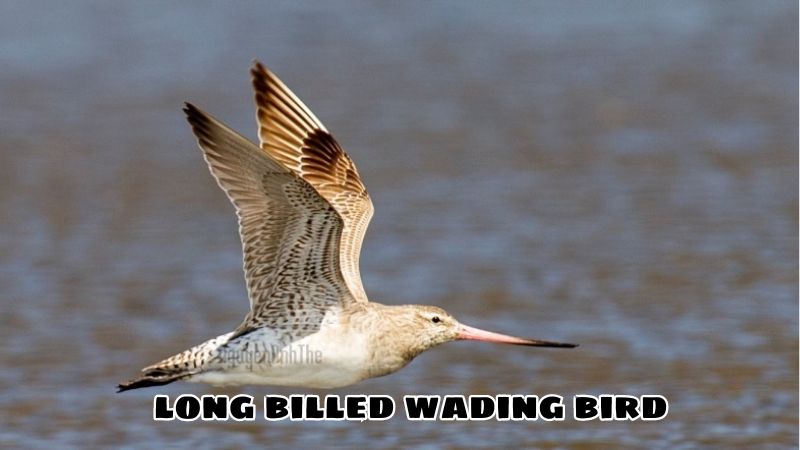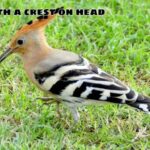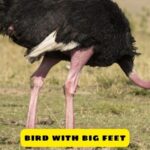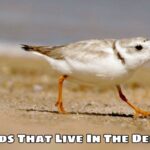On open sandbanks and freshwater wetlands, the long curved bills of long-billed wading birds shine like umbrellas to help them hunt. These birds, with their talented wading habits and hidden brooding wheels, help them reach colorful prey on the ground or in the water. Their craftsmanship not only enhances their biological value but also highlights the unique natural beauty of these habitats. Let’s learn more about this long billed wading bird with Exoticbirdscorner!
Introducing the long billed wading bird
Long beaked wading birds, also known as long-billed waders, are a group of birds belonging to many different orders, characterized by long, pointed and slender beaks, suitable for foraging in shallow water environments. This group of birds is famous for their ability to move flexibly through mud and swamps, using their long beaks to grope and catch small aquatic animals such as fish, insects and larvae.
Physically, long-billed wading birds are usually medium to large in size, with long, slim legs that help them move easily in mud. Their fur is usually brown, gray or black, helping them blend in with their surroundings. Some species have more colorful plumage, especially males during the breeding season.
Long-billed wading birds are widely distributed throughout the world, from tropical to temperate regions. They often live in coastal areas, lakes, swamps and rice fields. Some long-billed wading birds are migratory, moving seasonally in search of more abundant food sources.
Here are some typical examples of long-billed wading birds:
- Stork: Stork is the most common long-billed wading bird, with many different species such as white stork, black stork, flying stork,… Storks often live in large flocks and feed by groping in the mud to search for food. fish, frogs and insects.
- Cauldron: Cauldron is larger than a stork and often has colorful feathers. Cauldrons typically live in coastal areas and feed by roaming the beaches in search of fish, crabs, and other marine animals.
- Herons: Herons are smaller in size than storks and egrets, and usually have brown or gray plumage. Herons often live in swampy areas and rice fields, and feed by stalking prey in the water.
Long-billed wading birds play an important role in the ecosystem by helping to control small animal populations. They are also a food source for many other predators such as falcons, eagles and snakes.
Common long billed wading birds
The world of long-billed wading birds contains countless miracles, with mighty warriors roaming the muddy battlefields. Here are some typical examples:
1. American Avocet:
- Outstanding features: Famous for its unique curved beak, used to sweep mud and filter for food. Pure white fur and long, bright orange legs create an impressive appearance.
- Distribution: Common in North America, living mainly in coastal areas, swamps and salt lakes.
2. Black-necked Stilt:
- Outstanding feature: Possessing long legs, helping to move flexibly in mud. The long and pointed beak helps accurately catch small prey. The pure white fur with black highlights on the neck and top of the head creates an elegant appearance.
- Distribution: Widely distributed throughout the world, from North America, South America, Africa, Asia to Europe. Adaptable to a variety of habitats such as swamps, lakes, rice fields and coastal areas.
3. Long-billed Curlew:
- Outstanding features: The long, crescent-shaped beak is a powerful weapon for foraging and self-defense. Dark brown fur blends in with its surroundings, helping to hide itself from predators.
- Distribution: Common in North America and some areas of Northeast Asia. Live mainly in grasslands, fields and coastal areas.
Each species of long-billed wading bird has its own unique features, contributing to making the natural picture more vivid and colorful. Learning about these mighty warriors not only helps us understand more about the natural world but also stimulates our passion for exploration and love for all kinds of birds.
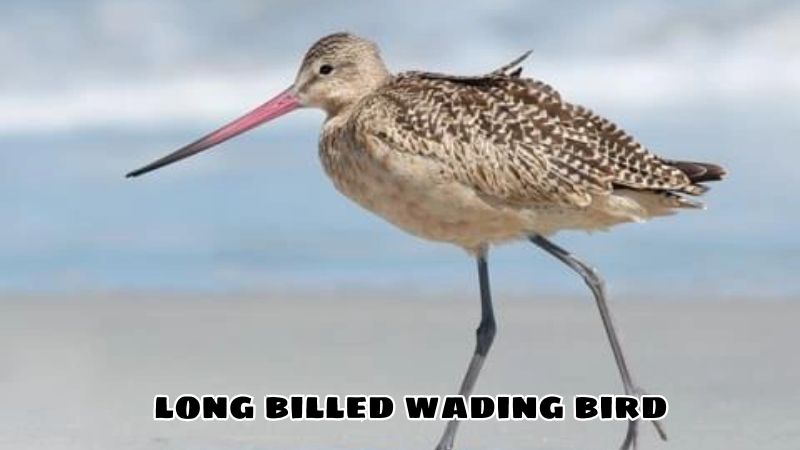
Reproduction and raising young of long billed wading birds
The breeding season of long billed wading birds usually takes place in spring and summer, when food sources are abundant and the weather is favorable for raising young. Depending on the species, long-billed wading birds will choose suitable nesting locations, perhaps on low tree branches, on rocks along the lake or on floating platforms in the swamp.
The nest building process usually involves both male and female birds. Male birds will attract female birds with unique displays, showing off their colorful feathers or chirping sounds. After successfully pairing, the birds will together collect materials such as twigs, leaves, mud and grass to build the nest.
Once the nest is completed, the female will lay 2 to 4 eggs. Both male and female birds take turns incubating the eggs for about 14 to 21 days. When the eggs hatch, the chicks will be born with soft downy feathers. The parents will continue to care for the young, providing them with food and protecting them from predators.
Young birds of long-billed wading birds usually develop quite quickly and can feed on their own after about 30 to 40 days. However, the parents will continue to protect and support the chicks until they are fully grown.
The journey of the long-billed wading bird to reproduce and raise its young is a testament to the miracle of nature. Each individual bird plays an important role in maintaining the species and ensuring balance in the ecosystem. Protecting habitat and minimizing negative human impacts is essential to protect these swamp “dancers” and preserve Earth’s biodiversity.
Raising long-billed wading birds: Should or should not?
Raising long-billed wading birds (long-billed birds) is not recommended for the following reasons:
- Habitat requirements: Long-billed wading birds need spacious habitats with abundant shallow water sources to feed and live. Keeping in cages or cages cannot fully meet this need, leading to negative effects on the bird’s health and natural behavior.
- Diet: Long-billed wading birds have a complex diet, including a variety of small animals that live in water such as fish, frogs, insects and larvae. Providing nutritious and diverse food for birds in captivity is very difficult, leading to the risk of nutritional deficiencies and disease.
- Ability to fly: Long-billed wading birds are migratory birds, needing to fly long distances to find food and reproduce. Keeping birds in captivity causes them to lose their ability to fly freely, affecting their health and spirit.
- Legal regulations: In many countries, raising long-billed wading birds is considered wildlife trade and is restricted or completely banned. Keeping wading birds in captivity may violate the law and lead to serious consequences.
Epilogue
The long billed wading bird is a symbol of sophistication and is adapted to marsh and sandy habitats. Every time they fill the water with their long soft feet and curved beaks to search for food, they make an important contribution to the ecological balance of the coastal ecosystem. The diversity of these birds is also a reason for us to care and protect them, keeping our planet always rich and harmonious.

